The construction of the wonderful canon of logarithms
The construction of the wonderful canon of logarithms
The construction of the wonderful canon of logarithms
You also want an ePaper? Increase the reach of your titles
YUMPU automatically turns print PDFs into web optimized ePapers that Google loves.
74 Trigonometrical Propositions.<br />
Again, add toge<strong>the</strong>r <strong>the</strong> logarithm <strong>of</strong> <strong>the</strong> half difference,<br />
<strong>the</strong> logarithm <strong>of</strong> <strong>the</strong> complement <strong>of</strong> <strong>the</strong> half<br />
sum, and <strong>the</strong> logarithm <strong>of</strong> <strong>the</strong> tangent <strong>of</strong> half <strong>the</strong> base;<br />
subtract <strong>the</strong> logarithm <strong>of</strong> <strong>the</strong> sum and <strong>the</strong> logarithm<br />
<strong>of</strong> half radius, and you will have <strong>the</strong> second found.<br />
Proceed as above with <strong>the</strong> first and second found,<br />
and you will obtain <strong>the</strong> sides.<br />
[d]<br />
Ano<strong>the</strong>r way <strong>of</strong> <strong>the</strong> same.<br />
Multiply <strong>the</strong> secant <strong>of</strong> <strong>the</strong> complement <strong>of</strong> <strong>the</strong><br />
sum <strong>of</strong> <strong>the</strong> angles at <strong>the</strong> base by <strong>the</strong> tangent<br />
<strong>of</strong> half <strong>the</strong> base.<br />
Multiply <strong>the</strong> product by <strong>the</strong> sine <strong>of</strong> <strong>the</strong> greater<br />
angle at <strong>the</strong> base, and you will have <strong>the</strong> first found.<br />
Multiply <strong>the</strong> same product by <strong>the</strong> sine <strong>of</strong> <strong>the</strong> less<br />
angle, and you will have <strong>the</strong> second found,<br />
<strong>The</strong>n divide <strong>the</strong> sum <strong>of</strong> <strong>the</strong> first and second found<br />
by <strong>the</strong> square <strong>of</strong> radius, and you wiU have <strong>the</strong> tangent<br />
<strong>of</strong> half <strong>the</strong> sum <strong>of</strong> <strong>the</strong> sides.<br />
Also subtract <strong>the</strong> less from <strong>the</strong> greater and you will<br />
have <strong>the</strong> tangent <strong>of</strong> half <strong>the</strong> difference <strong>of</strong> <strong>the</strong> sides.<br />
Whence add <strong>the</strong> arcs corresponding to <strong>the</strong>se two<br />
tangents, and <strong>the</strong> greater side will be obtained ; subtract<br />
<strong>the</strong> less arc from <strong>the</strong> greater and you have <strong>the</strong><br />
less side.<br />
Of <strong>the</strong> five consecutive parts <strong>of</strong> a spherical triangle, s^ven<br />
<strong>the</strong> three intermediate, to find both extremes by one oper^<br />
ation and without <strong>the</strong> need <strong>of</strong>discriminating between <strong>the</strong><br />
several cases.<br />
(*) '^^ angles at <strong>the</strong> base, <strong>the</strong> sine <strong>of</strong> <strong>the</strong> half<br />
f^^<br />
^-^ difference is to <strong>the</strong> sine <strong>of</strong> <strong>the</strong> half sum, as <strong>the</strong><br />
sine <strong>of</strong> <strong>the</strong> difference is to a fourth which is <strong>the</strong> sum<br />
<strong>of</strong> <strong>the</strong> sines.<br />
And



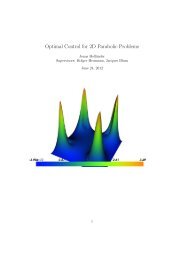
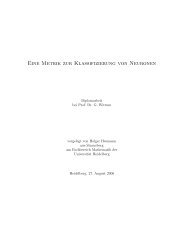
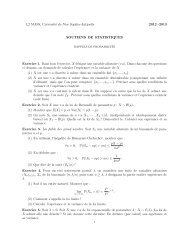
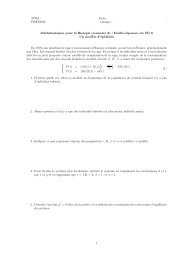


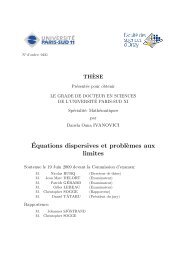
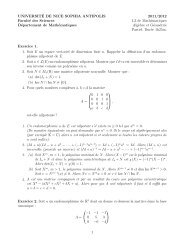
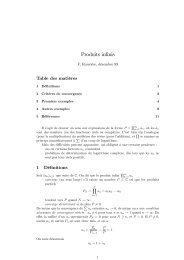
!['eries enti\`eres (+ [D78 Th d'Abel angulaire])](https://img.yumpu.com/14067031/1/184x260/eries-entieres-d78-th-dabel-angulaire.jpg?quality=85)

